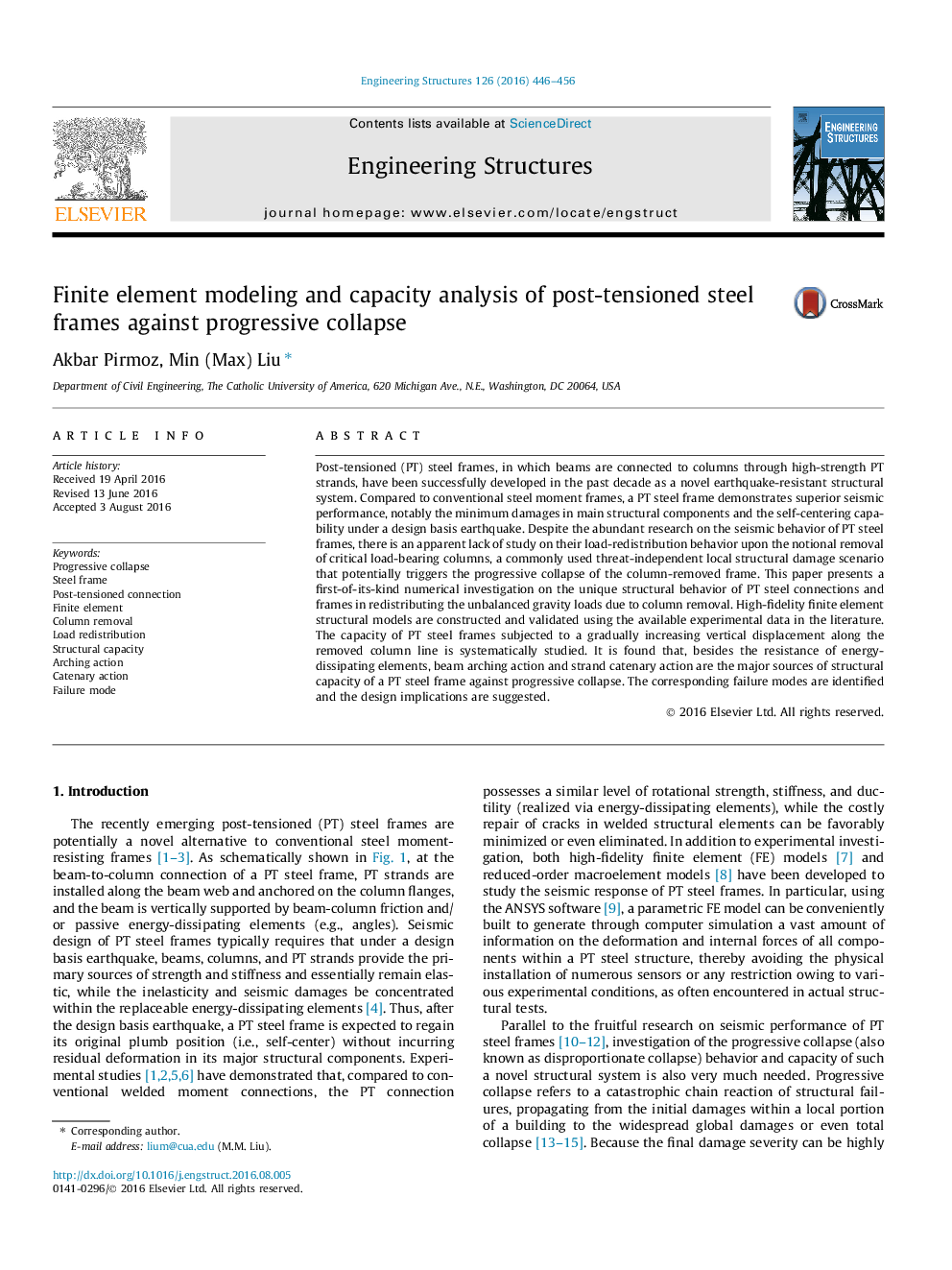| Article ID | Journal | Published Year | Pages | File Type |
|---|---|---|---|---|
| 4920779 | Engineering Structures | 2016 | 11 Pages |
Abstract
Post-tensioned (PT) steel frames, in which beams are connected to columns through high-strength PT strands, have been successfully developed in the past decade as a novel earthquake-resistant structural system. Compared to conventional steel moment frames, a PT steel frame demonstrates superior seismic performance, notably the minimum damages in main structural components and the self-centering capability under a design basis earthquake. Despite the abundant research on the seismic behavior of PT steel frames, there is an apparent lack of study on their load-redistribution behavior upon the notional removal of critical load-bearing columns, a commonly used threat-independent local structural damage scenario that potentially triggers the progressive collapse of the column-removed frame. This paper presents a first-of-its-kind numerical investigation on the unique structural behavior of PT steel connections and frames in redistributing the unbalanced gravity loads due to column removal. High-fidelity finite element structural models are constructed and validated using the available experimental data in the literature. The capacity of PT steel frames subjected to a gradually increasing vertical displacement along the removed column line is systematically studied. It is found that, besides the resistance of energy-dissipating elements, beam arching action and strand catenary action are the major sources of structural capacity of a PT steel frame against progressive collapse. The corresponding failure modes are identified and the design implications are suggested.
Keywords
Related Topics
Physical Sciences and Engineering
Earth and Planetary Sciences
Geotechnical Engineering and Engineering Geology
Authors
Akbar Pirmoz, Min (Max) Liu,
